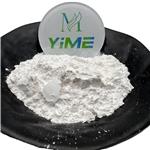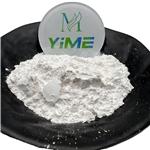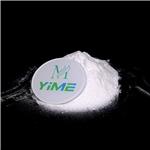- silicon dioxide
-

- $4.00 / 1000KG
-
2024-04-26
- CAS:7631-86-9
- Min. Order: 1000KG
- Purity: 99%
- Supply Ability: 1000kg/day
- Fumed Silica
-

- $7.00 / 1KG
-
2024-04-26
- CAS:7631-86-9
- Min. Order: 1000KG
- Purity: 99%
- Supply Ability: 1000kg/day
- silicon dioxide
-

- $4.00 / 1000KG
-
2024-04-26
- CAS:7631-86-9
- Min. Order: 1000KG
- Purity: 99%
- Supply Ability: 1000kg/day
Related articles - Is silicon dioxide bad for you?
- Silicon dioxide is found naturally in water, plants, animals, and the earth. The earth's crust is 59 percent silica. It makes ....
- Mar 12,2024
|
| | Silicon dioxide Chemical Properties |
| Melting point | >1600 °C(lit.) | | Boiling point | >100 °C(lit.) | | density | 2.2-2.6 g/mL at 25 °C | | vapor pressure | 13.3hPa at 1732℃ | | refractive index | 1.46 | | Fp | 2230°C | | storage temp. | 2-8°C | | solubility | Practically insoluble in water and in mineral acids except hydrofluoric acid. It dissolves in hot solutions of alkali hydroxides. | | pka | 6.65-9.8[at 20 ℃] | | form | suspension | | color | White to yellow | | Specific Gravity | 2.2 | | PH | 5-8 (100g/l, H2O, 20℃)(slurry) | | Odor | at 100.00?%. odorless | | Resistivity | 1∞10*20 (ρ/μΩ.cm) | | Water Solubility | insoluble | | Sensitive | Hygroscopic | | Hydrolytic Sensitivity | 6: forms irreversible hydrate | | Crystal Structure | Trigonal | | Merck | 14,8493 | | Exposure limits | NIOSH: IDLH 3000 mg/m3; TWA 6 mg/m3 | | Stability: | Stable. | | CAS DataBase Reference | 7631-86-9(CAS DataBase Reference) | | IARC | 3 (Vol. Sup 7, 68) 1997 | | NIST Chemistry Reference | Silicon(iv) oxide(7631-86-9) | | EPA Substance Registry System | Silica (7631-86-9) |
| Provider | Language |
|
Silica
| English |
| | Silicon dioxide Usage And Synthesis |
| General Description | Silicon dioxide occurs almost everywhere on earth. It is one of the most important and abundant oxides on earth, constituting about 60% weight of the earth’s crust as silica itself or in combination with other metal oxides in silicates. It commonly is found as sand in the vast ocean and river shores, their beds, deserts, rocks, and minerals.
Silicon dioxide exists in several structural forms: polymorphic crystalline silica, synthetic quartz crystals, amorphous silica, and vitreous silica. This classification is not complete as there are other forms of silica synthesized for specialized applications.
| | Uses |
Industry
Application
Role/benefit
Food
Powdered foods, such as salt, many spices, etc.
Ant-caking agent/ when added to a mixture, prevents its ingredients from binding together
Nutritional health food supplements
Source of silicon/maintain healthy strong bones and joints and minimizes aluminum effects on the body
Wine, beer and juice
Fining agent
Chemical manufacture
Manufacture of silicon compounds and sodium silicate
Raw material
Construction
Production of portland cement
Raw material
Sand casting
Main ingredient/high melting point
Glass
High purity silica glass
Raw material/high temperature and corrosion resistance
Domestic glass and optical devices
Essential component
Ceramics
Manufacture of ceramic glaze
Main constituents/forms glass when heated to bind others ingredients together
Metallurgy
Manufacture of silicon alloys
Raw material or additive
Pharmaceutical
Drug tablets making
Flow agent/aids powder flow when tablets are formed
Preventing Alzheimer’s disease
Effective components/minimizes aluminum effects on the body which may cause Alzheimer’s disease
Electronics
Fiber optic cables
Raw material/high level of heat conductivity and low rate of transmission loss
Wire insulation
Raw material/high melting point and good insulating property
Semi-conductors
Source of silicon
Piezoelectric transducer
Main component/can convert mechanical energy to electrical energy and vice-versa
Others
Refractory materials
Main component/high melting point and high shock resistance
Rubber and plastics
Additive/improves wearing capacity
DNA Extraction
Source of silicon/has binding properties which help to isolate the strands of DNA
Manufacture of silica gel
Defoaming
Defoamer component
Silica-based aerogel
Source of silicon
Hydraulic fracturing
Thickening agent
| | Chemical Properties | Diatomaceous earth is a transparent to gray,
odorless amorphous powder. | | Chemical Properties | Amorphous silica, the noncrystalline form of SiO2, is a transparent to gray, odorless, amorphous powder | | Chemical Properties | white crystals or powder | | Physical properties | Colorless amorphous (i.e., fused
silica) or crystalline (i.e., quartz)
material having a low thermal
expansion coefficient and
excellent optical transmittance
in far UV. Silica is insoluble in
strong mineral acids and alkalis
except HF, concentrated H3PO4, NH4 HF2 , concentrated alkali metal hydroxides. Owing to its
good corrosion resistance to
liquid metals such as Si, Ge, Sn,
Pb, Ga, In, Tl, Rb, Bi, and Cd, it
is used as crucible container for
melting these metals, while silica
is readily attacked in an inert
atmosphere by molten metals
such as Li, Na, K Mg, and Al.
Quartz crystals are piezoelectric
and pyroelectric. Maximum
service temperature 1090°C. | | Uses | manufacture of glass, water glass, refractories, abrasives, ceramics, enamels; decolorizing and purifying oils, petroleum products, etc.; in scouring- and grinding-compounds, ferrosilicon, molds for castings; as anticaking and defoaming agent. | | Uses | Silica (SiO2) (RI: 1.48) is mined from deposits of diatomaceous soft
chalk-like rock (keiselghur). This is an important group of extender pigments,
which is used in a variety of particle sizes. They are used as a
flatting agent to reduce gloss of clear coatings and to impart shear thinning
flow properties to coatings. They are relatively expensive. | | Uses | silica is also known as silicone dioxide. Silica has a variety of applications: to control a product’s viscosity, add bulk, and reduce a formulation’s transparency. It can also function as an abrasive. In addition, it can act as a carrier for emollients, and may be used to improve a formulation’s skin feel. Spherical silica is porous and highly absorbent, with absorption capabilities roughly 1.5 times its weight. A typical claim associated with silica is oil control. It is found in sunscreens, scrubs, and wide range of other skin care, makeup, and hair care preparations. It has been successfully used in hypoallergenic and allergy-tested formulations. | | Uses | Functionalized RAFT agent for controlled radical polymerization; especially suited for the polymerization of styrene; acrylate and acrylamide monomers. Azide group can be used to conjugate to a variety of alkyne-functionalized biomolecules. Chain Transfer Agent (CTA). | | Uses | SDS mixture of sodium alkyl sulfates consisting chiefly of sodium lauryl sulfate | | Uses | Silicon(IV) oxide, amorphous is used as carriers, processing aids, anti-caking and free-flow agents in animal feed. Defoamer applications such as paint, food, paper, textile and other industrial applications. Synthetic silicon dioxides are used as a rheology control agent in plastics. It is also used to manufacture adhesives, sealants and silicones. | | Definition | ChEBI: A silicon oxide made up of linear triatomic molecules in which a silicon atom is covalently bonded to two oxygens. | | General Description | contains sodium stabilizing counterion | | Hazard | Not toxic if ingested, inhaled silica dust can
cause silicosis; carcinogen. | | Agricultural Uses | Silica is silicon dioxide, one of the most abundant
materials on the earth's crust. Quartz is an example of
silica. It is used as a filler in fertilizers, and also, in the
manufacture of glass, ceramics, abrasives, rubber and
cosmetics. | | Safety Profile | The pure unaltered form is considered a nuisance dust. Some deposits contain small amounts of crystahne quartz and are therefore fibrogenic. When diatomaceous earth is calcined (with or without fluxing agents) some sdica is converted to cristobalite and is therefore fibrogenic. Tridymite has never been detected in calcined batomaceous earth. See also other silica entries | | Potential Exposure | Diatomaceous earth is used as
a filtering agent and as a filler in construction materials,
pesticides, paints, and varnishes. The calcined version
(which has been heat treated) is the most dangerous and
contains crystallized silica, and should be handled as silica.
See also other entries on silica | | Shipping | This material is not singled out by DOT
in its
Performance-Oriented Packaging Standards. | | Purification Methods | Purification of silica for high technology applications uses isopiestic vapour distillation from concentrated volatile acids and is absorbed in high purity water. The impurities remain behind. Preliminary cleaning to remove surface contaminants uses dip etching in HF or a mixture of HCl, H2O2 and deionised water [Phelan & Powell Analyst 109 1299 1984]. | | Derivatives | Precipitated silica is obtained like silica gel by acidifying an aqueous solution of sodium
silicate. Precipitated silica is used as filler in rubber for automobile tires and reinforcement
particulate in elastomers, and as a flatting agent in paints and coatings for improving the flatness of coatings. | | Incompatibilities | Silica, amorphous is a noncombustible solid. Generally unreactive chemically. Incompatible with fluorine, oxygen difluoride, chlorine trifluoride. Soluble in molten alkalis and reacts with most metallic oxides at high temperature. | | Waste Disposal | Sanitary landfill. |
| | Silicon dioxide Preparation Products And Raw materials |
|